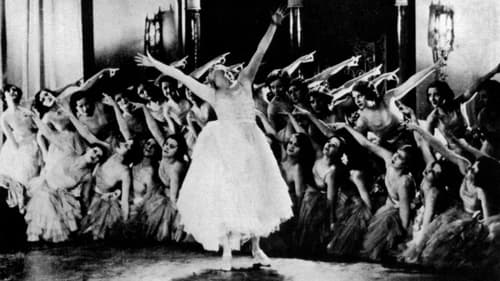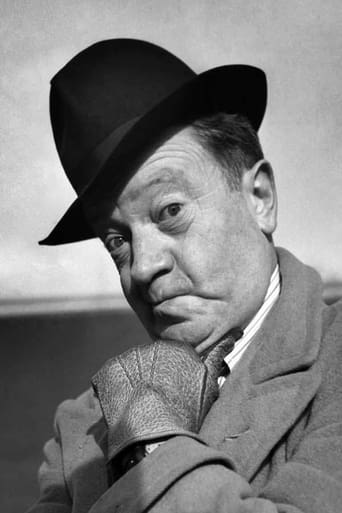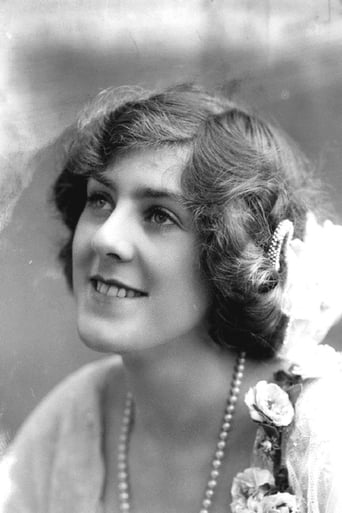Scanialara
You won't be disappointed!
Ensofter
Overrated and overhyped
ReaderKenka
Let's be realistic.
rowenalite
Released in 1930, Elstree Calling was directed by Andre Charlot, Jack Hulbert, Paul Murray, and Alfred Hitchcock. Luckily, too many cooks did not spoil the broth in this case but created a marvelous musical and comedic soufflé. The film is a series of vaudeville-type skits and sketches. Tommy Handley hosts the show. "Think, and having thunk, think again," Handley humorously advises the audience. The sections vary in quality but none are poor. Among the best: Teddy Brown whistling while playing the xylophone; lovely, blonde, and ethereal Helen Burnell in a sparkling sequined gown singing; a sprightly Russian-style song and dance number; Cicely Courtnedge singing an entrancing rendition of I'm Falling In Love; and Jack Hulbert and Helen Burnell in a dynamic duet. One brief sketch is darkly humorous as a man appears to enter a home, shoot the man and woman he "catches" kissing, only to realize, "I'm in the wrong flat!" In one section, bagpipes play while a Scotsman in a kilt sings about how "happiness costs such a lot." It is wonderfully sung but some viewers may be offended by the way it plays on the stereotype of the Scots as stingy.Far more viewers are apt to be offended by the sketches done by "The Three Eddies." The tap dancers are in blackface with white lips, white bowler hats, and white-rimmed round eyeglasses. Their tap dancing is wonderfully skilled but one does not have to be a stickler for "political correctness" to be disturbed by the racist stereotyping in their act. A better note is struck in a skit in which Elstree Calling appears to play with racial (not necessarily racist expectations). In an odd take on The Taming of the Shrew, Anna Mae Wong is the clearly Asian daughter of a white man. Beautiful Wong appears as Katherine in a shiny and revealing outfit. Instead of being "tamed," this "shrew" gets her revenge by throwing cream pies in the faces of all the men around her – including Shakespeare himself!Like many works from past time periods, Elstree Calling sometimes strikes an "off" chord with contemporary audiences. Nevertheless, it is a fast-paced and fun series. One hour and twenty-six minutes long, it never drags but is a very entertaining potpourri of performances.
Igenlode Wordsmith
In producing this brand-new singing, dancing, all-talkie film, British International Pictures inadvertently contrived to preserve a cross-section of the contemporary London stage scene from the West End to the music halls. Sit back in your seat, enjoy the entertainment beamed directly to your home (I had no idea that television existed in the popular perception long before the BBC), and let yourself be carried away back to the days of 1930, flitting from venue to venue to experience a night out in the London of the era. Some of the acts are to one taste, some to another, but you've paid for the programme as a whole so applaud and wait to see what's coming next.My personal favourite would be the live-wire tapping and jazzy tunes of the Three Eddies' blackface act (especially the skeleton dance!), but while overall I was interested in this revue chiefly for the music -- it features unknown (at least to me) tunes by Vivian Ellis and Ivor Novello, for example -- there's a good deal else that's worth enjoying, and a few tantalising glimpses 'backstage' at the Elstree studios as well."Elstree Calling" was edited on the cheap and rushed out in ten days for a hasty release to recoup the cost of production, and it shows. Few of the five or six camera angles filmed on every shot actually got used, for instance, and a number of bizarre choices seem to have been made, such as choosing to show a dance sequence via a camera focused too high and showing a vast expanse of curtain above the performers' heads but cutting off their actual feet -- or a shot that shows the performers disappearing off the left-hand side of the frame while focusing on the empty set centre-stage. Did anybody even take the trouble to screen these clips before attaching them together? (Director Adrian Brunel, who had left detailed directions for the compilation of his footage only for them to be totally ignored, complained in his autobiography "How could the Hulbert-Courtneidge numbers be slung together like that without looking like casual newsreel photographing?") I was also a bit puzzled by the smoke that appears to be pouring out of the top of the jaw-droppingly gigantic image of 'Little' Teddy Brown in the background of his first musical interlude -- presumably a side-effect of the stage lighting? But it isn't just the editing: certainly in the chorus sequences, the choreography tends to suffer from being cramped onto a film set, while no-one seems to yet have worked out how to avoid having a long line of girls strung out across the middle of a square-format screen. (See, e.g. the chorus sequences in British-Gaumont's "First a Girl" for more sophisticated treatment later in the Thirties.)Still, I found this glimpse onto the theatre world of the era thoroughly enjoyable: it was particularly interesting after having screened the shorts in the silent "On With the Dance" series of only a few years only, since the styles are very similar but obviously this time with music. Just don't expect cinema: theatre is what is advertised, and theatre is what you will get -- though there is a brief homage to the antics of Douglas Fairbanks in the burlesque "Taming of the Shrew" that closes the act!
dbborroughs
Hichcock's WTF movie. He's co-director of a static early sound film that is the British version of the all singing and all dancing review films that Hollywood do in the late 20's early 30's. Only it's less opulent and it has a real feeling of being a filmed stage play. It also suffers from weak music and dancing and unfunny comedy bits.I know the surviving prints are shorter than then what it once was which is probably better that way. Since some of the bits seem to go on way too long.You're either going to love this or hate it.For me once was enough.
eocostello
Elstree Calling (1930), like most of the revues of the era, has some high points and misfires. Hitchcock's linking material here can be quite funny, and the colour sequences aren't bad (even if "The Thought Never Entered My Head" is a bit ungainly). A pleasant goof, for most




